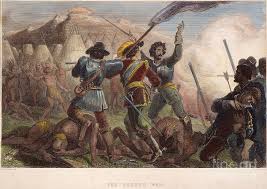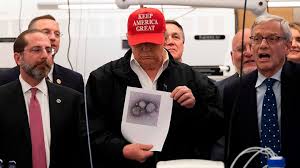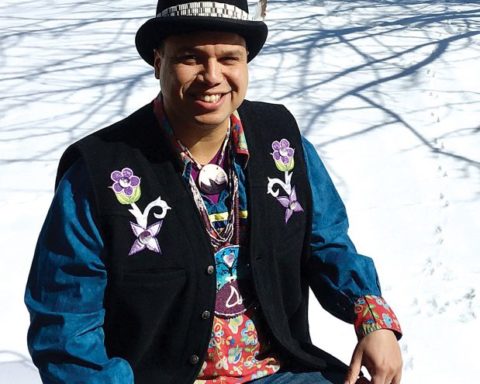THE VIEW FROM: MYSTIC; An 1889 Statue Leads to Second Thoughts About a Battle in 1637
By Sam Libby
- Nov. 29, 1992
SINCE 1889 a bronze statue of Capt. John Mason has stood on Pequot Avenue in the Groton section of Mystic. The statue commemorates what was once viewed as a glorious victory by English Colonists and their Mohegan and Narragansett Indian allies over Pequot Indians.
In 1992, however, the statue has become the focus of a debate among state officials and local residents, including Indians.
The debate comes as the 500th anniversary of Christopher Columbus’s arrival in the New World has become a time of reappraisal of American history.
The statue is a glorification of a massacre in which men, women and children were murdered, said Lone Wolf Jackson, an Eastern Pequot. “The display of this statue is as offensive to Pequots as the display of a statue of Adolf Hitler would be to Jewish people,” he said.
Mr. Jackson has led a campaign to have the statue removed, and has been appointed by the Groton Town Council to a committee that is to make a recommendation to the town regarding the statue.
But the State of Connecticut has the ultimate jurisdiction over the statue, according to Mayor Linda Krause of Groton.
A Petition Drive
During the summer, a petition for the removal of the Mason statue was circulated throughout southeastern Connecticut. Mr. Jackson said that more than 900 signers agreed with the petition’s sentiment that the statue is “an inappropriate commemoration of a massacre of over 700 men, women, and children and represents a distortion of history which is extremely offensive to many citizens, particularly Native Americans.”
Mr. Jackson is supported by an ad hoc organization, the Southeastern Connecticut Coalition for Peace and Justice, which includes the Roman Catholic Diocese of Norwich, Veterans for Peace and the American Arab Anti-Discrimination League.
Their efforts to remove the statue are opposed by the Mystic River Historical Society.
The statue may be different things to different people, but it is definitely an important artifact of New England history, said Joyce Everett, president of the Mystic Historical Society. She suggested that a new plaque be installed to give an Indian viewpoint to the commemoration of the Pequot War.
Joseph Hickey, the state’s park planner with the Department of Environmental Protection, which has control of the statue’s fate, is also a member of the John Mason Statue Advisory Committee appointed last month by the town council.
“There is no official state position on the statue,” Mr. Hickey said. But he did say that he does not personally believe the statue should be removed, and that the state might have a responsibility to preserve the statue.
“But that doesn’t mean a responsible, sensible solution to this dispute can’t be found,” he said.
According to Mr. Jackson, while the Pequots want the statue removed, the tribal councils of the three Pequot tribes — Mashantucket Pequot, Eastern Pequot and Pawcatuck Eastern Pequot — have not taken official positions on the matter.
The Mason statue stands on an island in the middle of Pequot Avenue, a landmark among the well-kept homes in a quiet, middle-class neighborhood. It is believed to be on or near the site where a force of 80 English Colonists and 200 Mohegan and Narragansett Indians overran the central fort of the Pequot Nation more than 350 years ago.
As English and Dutch traders and Colonists began arriving in southern New England in the 16th and 17th centuries, they came into conflict with the Pequot Nation, the pre-eminent military and economic power in the region.
Mason’s expedition attacked the Pequot fort in Mystic on the night of May 25, 1637.
Captains Saved by Their Armor
One description of what occurred comes from Capt. John Underhill, Captain Mason’s second in command, in a book called “The Pequot War.”
Captain Underhill described how the Pequots repelled the first attack by the English and Indian force after two English soldiers had been killed and about 20 wounded. Captain Mason and Captain Underhill were said to be saved by their armor.
“But seeing the fort was too hot for us, we devised a way how we might save ourselves and prejudice them,” wrote Captain Underhill.
“Captain Mason entering into a wigwam, brought out a firebrand, after he had wounded many in the house. Then he set fire on the west side (of the fort) . . . myself set fire on the south end with a train of powder. The fires of both meeting in the center of the fort blazed most terribly, and burnt all in the space of half an hour. Many courageous fellows were unwilling to come out and fought most desperately throughout the fort, so as they were scorched and burnt with the very flame, and were deprived of their arms — in regard the fire burnt their very bowstrings — and so perished valiantly.’Many Were Burnt in the Fort’
“Mercy did they deserve for their valor, could we have had opportunity to have bestowed it. Many were burnt in the fort, both men, women, and children. Others forced out, and came in troops to the Indians, 20 and 30 at a time, which our soldiers received and entertained with the point of the sword. Down fell men, women, and children; those that escaped us, fell into the hands of the Indians that were in the rear of us.”
Captain Underhill wrote that the Mohegans and Narragansetts reported that there were about 400 Pequots in the fort, and no more than five managed to escape. (Various accounts say as few as 400 but as many as 700 died in the attack.)
The horror the statue glorifies is only now becoming apparent to non-Indians, said Raymond Geer, a Pawcatuck Eastern Pequot, who led an unsuccessful attempt to have the statue removed in 1984.
The difference between previous and current campaigns is that there has not been the broad support for the statue’s removal before now, Mr. Geer said.
Presently, Pawcatuck Eastern Pequots are trying to evict Eastern Pequots from reservation lands in North Stonington. Eastern Pequots, who are of darker complexion than the Pawcatuck Eastern Pequot, claim the dispute is racially motivated. Pawcatuck Eastern Pequots insist that the Eastern Pequots are not Indians.
While a spokeswoman for the Mashantucket Pequot Tribal Council declined to comment on the statue issue, Mr. Hickey, the state official, said it was his understanding that the tribal council did not want to make this into a divisive issue. “The tribe wants to develop allies in the communities and not enemies over a no-win situation regarding something that happened back in 1637,” Mr. Hickey said.
The Mashantucket Pequots, who as owners of the Foxwoods casino and bingo hall, have been willing to work with the surrounding community in efforts to promote tourism and economic development in southeastern Connecticut, Mr. Hickey said. The Victims ‘Were All Pequots’
Wayne Real, whose brother is a member of the Mashantucket Pequot Tribal Council, said he believed that how Pequots stand on the issue was an individual matter. “The people who were massacred were not Mashantucket Pequot, or Eastern Pequot, or Pawcatuck Eastern Pequot; they were all Pequots,” Mr. Real said.
But Mr. Real said he understood that most Pequots wanted the statue removed and not modified or displayed somewhere else.
The historian of Mystic, Carol W. Kimball, defended the statue as a work of art and as an educational historical reference.
“To remove the statue is not going to change what happened in 1637,” said Ms. Kimball, who is a member of Groton’s advisory panel on the statue. She said she was in favor of adding plaques to explain the historic event.
Her colleague on the advisory panel, David Silk, considered the educational benefits and said: “If you follow this logic, a similar statue of the madman who killed school children in Stockton with an assault rifle should be placed at the site of that killing. The statue should give the name and ages of the murdered children on its pedestal so people can learn history.”
Mr. Silk, a member of the Southeastern Connecticut Coalition for Peace and Justice, maintained that the statue remains “a tribute to a man who massacred women and children who were trying to surrender.”Colonial Ancestors as Heroes.
From Christopher Columbus onward, icons of previous generations are coming under more scrutiny, and Captain Mason happens to be one of them, said the state’s archelogist, Nicholas F. Bellantoni.
“When that statue was put up, there was a historical view in the late 19th century of our Colonial ancestors as heroes,” he said. “Rather than seeing New England cleared out of ‘savages,’ now we’re starting to see how sophisticated and how important these cultures were. One thing historians and archeologists realize is that the native side has never really been given attention.”
No matter what the town recommends and the state ultimately decides about the statue, Mr. Jackson said he would continue his efforts to see that the statue was removed and replaced by an American Indian commemoration of the 1637 massacre.
“The statue has to go,” he said. “It’s the only right thing to do.”





